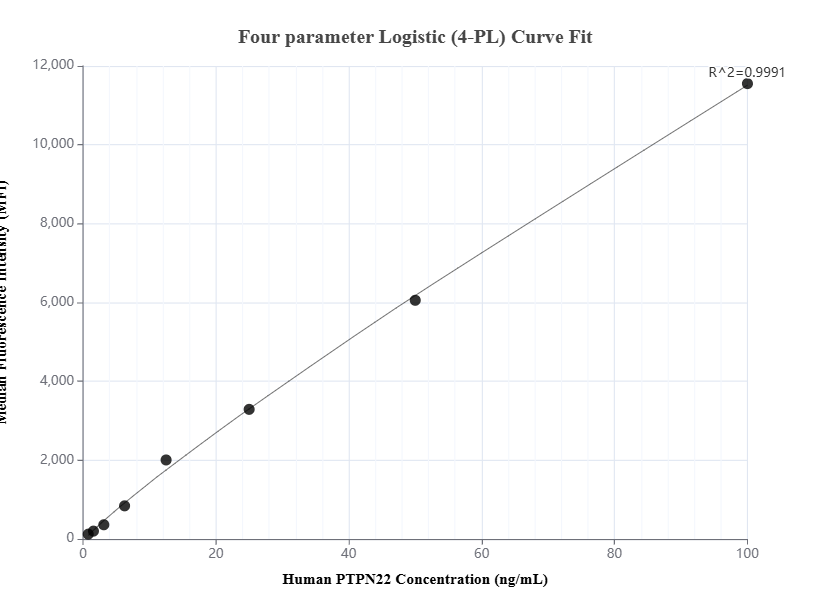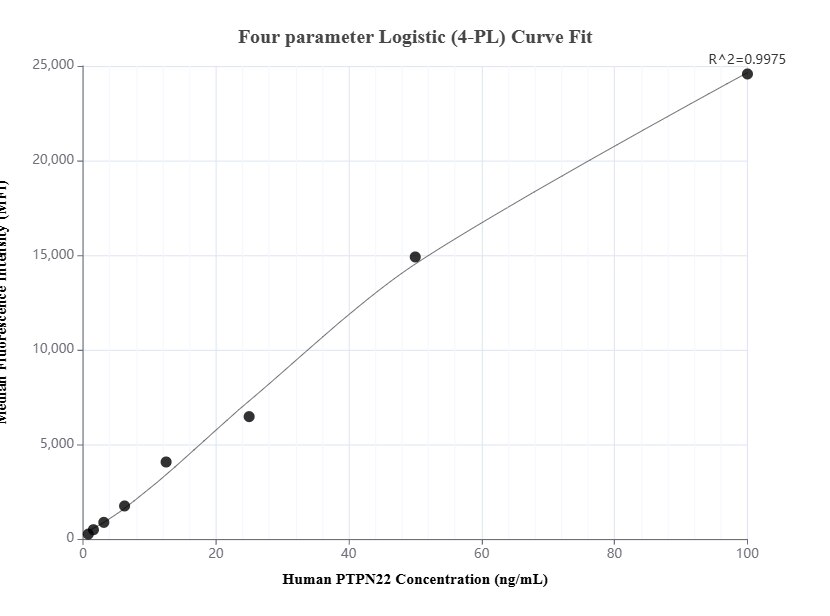Validation Data Gallery
Tested Applications
Recommended dilution
| Application | Dilution |
|---|---|
| It is recommended that this reagent should be titrated in each testing system to obtain optimal results. | |
Product Information
85062-2-PBS targets PTPN22 as part of a matched antibody pair:
MP01818-1: 85062-2-PBS capture and 85062-3-PBS detection (validated in Cytometric bead array)
MP01818-2: 85062-2-PBS capture and 85062-1-PBS detection (validated in Cytometric bead array)
Unconjugated rabbit recombinant monoclonal antibody in PBS only (BSA and azide free) storage buffer at a concentration of 1 mg/mL, ready for conjugation. Created using Proteintech’s proprietary in-house recombinant technology. Recombinant production enables unrivalled batch-to-batch consistency, easy scale-up, and future security of supply.
This conjugation ready format makes antibodies ideal for use in many applications including: ELISAs, multiplex assays requiring matched pairs, mass cytometry, and multiplex imaging applications.Antibody use should be optimized by the end user for each application and assay.
| Tested Reactivity | human |
| Host / Isotype | Rabbit / IgG |
| Class | Recombinant |
| Type | Antibody |
| Immunogen |
CatNo: Ag2397 Product name: Recombinant human PTPN22 protein Source: e coli.-derived, PGEX-4T Tag: GST Domain: 1-179 aa of BC017785 Sequence: MDQREILQKFLDEAQSKKITKEEFANEFLKLKRQSTKYKADKTYPTTVAEKPKNIKKNRYKDILPYDYSRVELSLITSDEDSSYINANFIKGVYGPKAYIATQGPLSTTLLDFWRMIWEYSVLIIVMACMEYEMGKEAEKRKSDYIIRTLKVKFNSVSVILAHQTSLQNLFSQITPAHF 相同性解析による交差性が予測される生物種 |
| Full Name | protein tyrosine phosphatase, non-receptor type 22 (lymphoid) |
| Calculated molecular weight | 82 kDa, 92 kDa |
| Observed molecular weight | 100-110 kDa |
| GenBank accession number | BC017785 |
| Gene Symbol | PTPN22 |
| Gene ID (NCBI) | 26191 |
| Conjugate | Unconjugated |
| Form | |
| Form | Liquid |
| Purification Method | Protein A purification |
| UNIPROT ID | Q9Y2R2 |
| Storage Buffer | PBS only{{ptg:BufferTemp}}7.3 |
| Storage Conditions | Store at -80°C. |
Background Information
PTPN22(Tyrosine-protein phosphatase non-receptor type 22) is also named as LyP,PEP,PTPN8.It belongs to the protein-tyrosine phosphatase family and non-receptor class 4 subfamily.It acts as negative regulator of T-cell receptor (TCR) signaling.Defects in PTPN22 are a cause of susceptibility to systemic lupus erythematosus (SLE). It has some isoforms produced by alternative splicing with calculated molecular mass of 79-92 kDa, and apparent molecular mass of 100-110 kDa.



